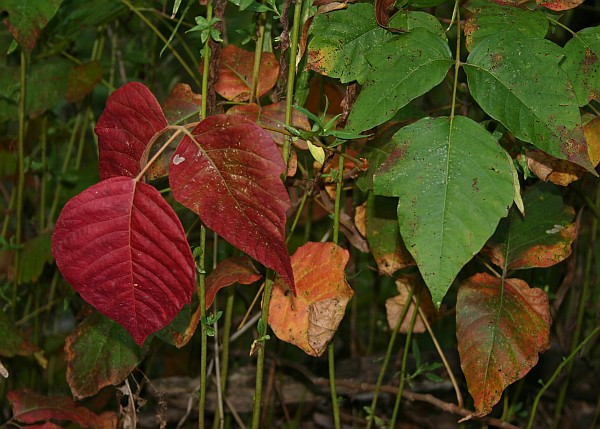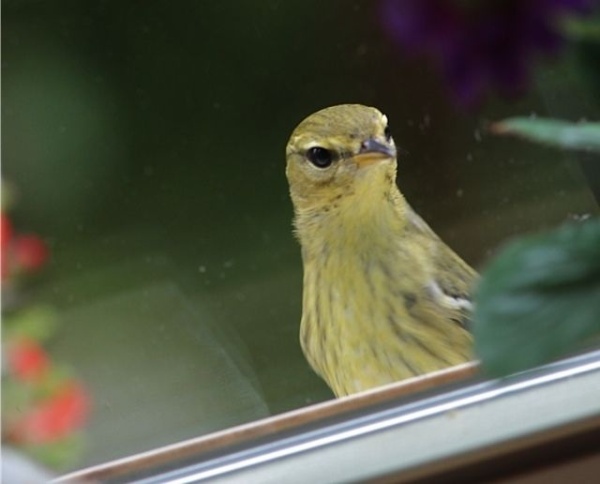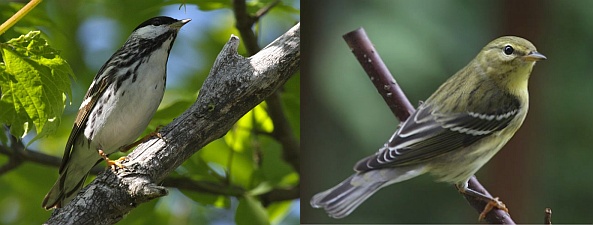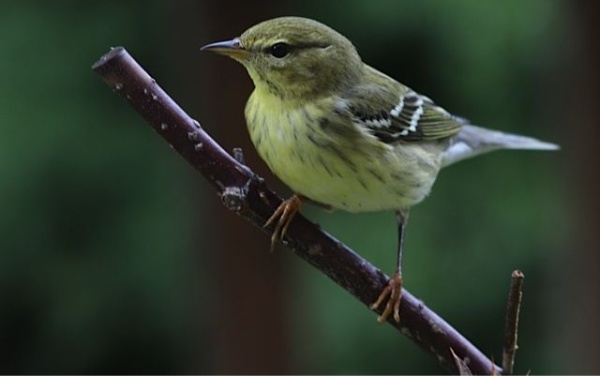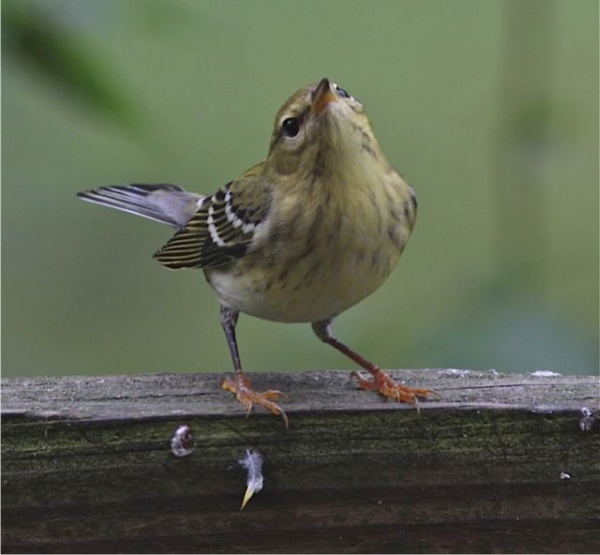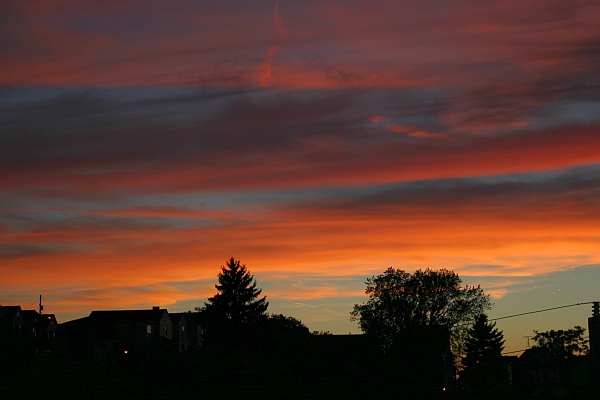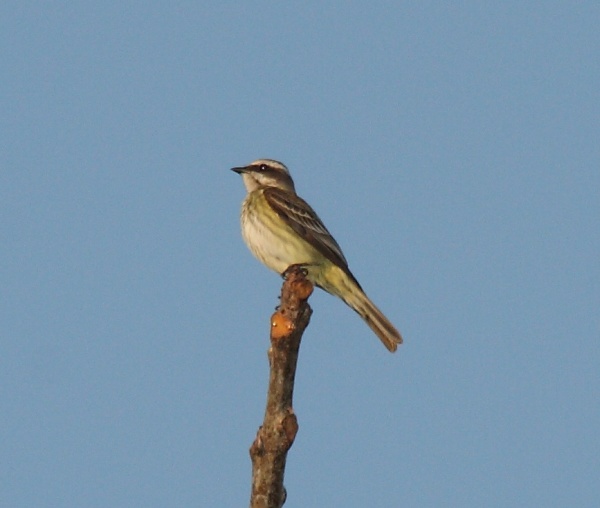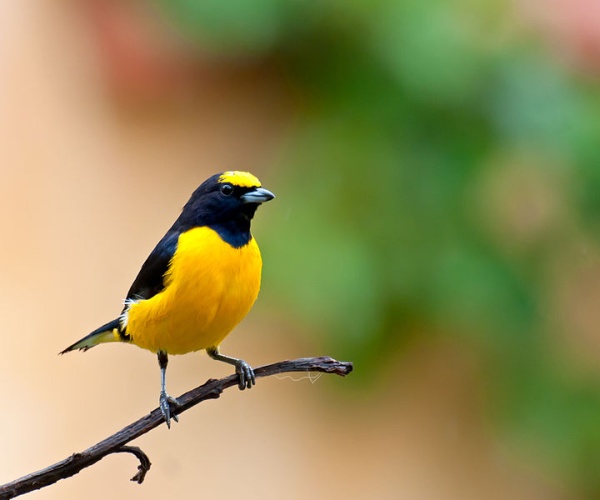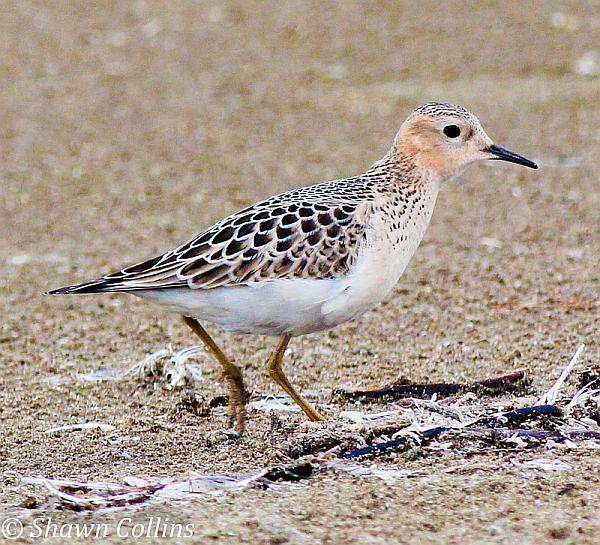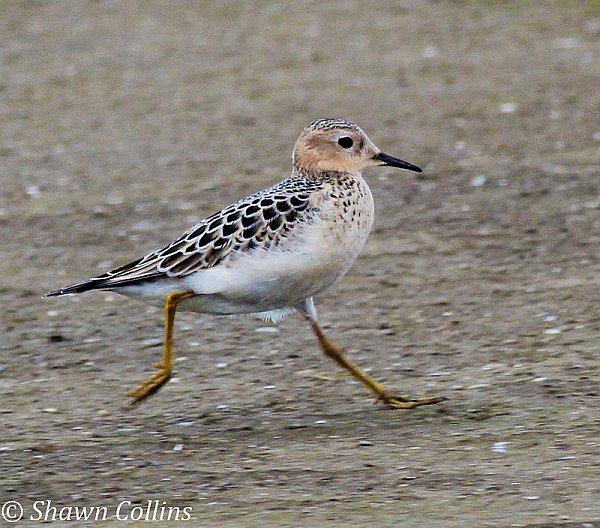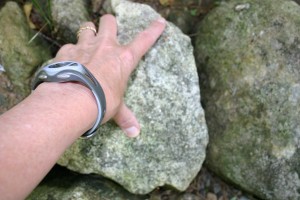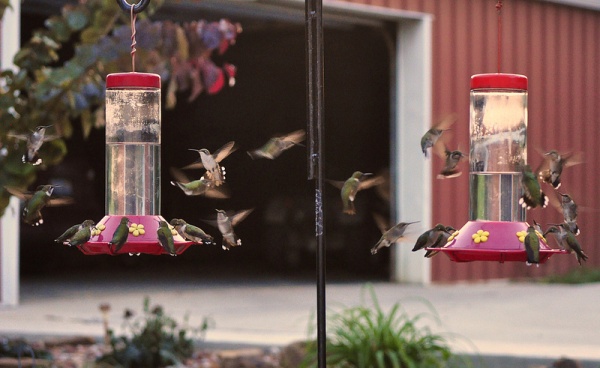
Last week Peter Bell alerted me to this awesome photo of more than two dozen ruby-throated hummingbirds. Taken on September 18 by Illinois photographer jeffreyw, the feeders are mobbed by tiny birds. Jeffrey aptly calls this, “Please take a number.”
If you feed hummingbirds, I’m sure you find this scene as amazing as I do. Normally a single hummer dominates the feeder and chases all others away. Who knew that when large numbers feed together they line up peacefully!
See how nicely they’re behaving?
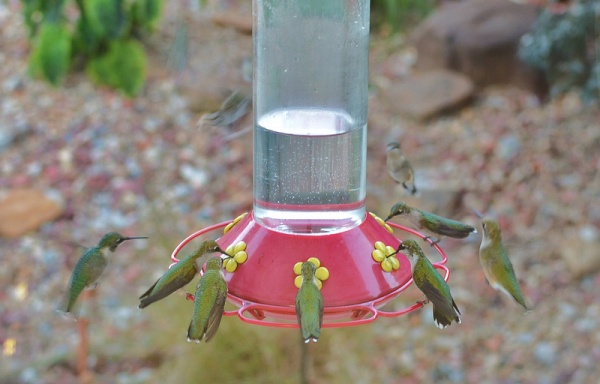
And here’s a quick video of Jeffrey’s feeders in mid-August. You can hear them chirping. Wow!
I asked Jeffrey how he attracts so many hummingbirds.
He wrote, “We mount feeders according to demand, one early [in the season], then adding until we get to 5 feeders. We could add more but have restricted ourselves lest the project gets out of hand. As the birds migrate away we remove feeders until we are back to one and leave that one till the freeze.
We have been building our flock for 25+ years.”
Persistence pays off. Feed them (a lot!) year after year, and they will come.
Thanks to JeffreyW for permission to use his photos. Hummingbirds aren’t his only subject. Check out his photos and food on the What’s 4 Dinner Solutions blog.
(photos and video by jeffreyw)
p.s. Very soon all the ruby-throats will have left the eastern U.S. for their winter home. If you’re addicted to hummingbirds and up for a challenge, leave your feeder out, keep it from freezing, and you just might attract a Selasphorus (rufous or Allen’s) hummingbird newly arrived from western North America. Here’s Scott Weidensaul’s advice on how to attract these unusual western hummingbirds and Rob Protz’ history of rufous hummers in Pennsylvania.

